#wasp mimic clearwing moth
Photo
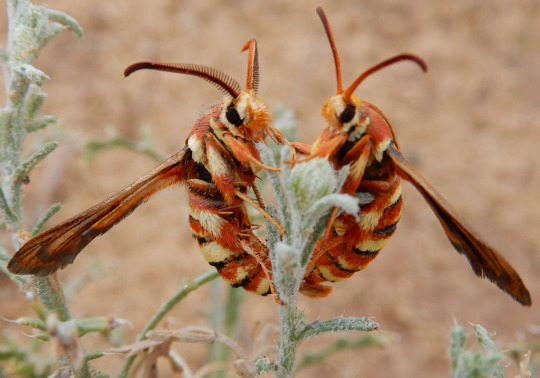
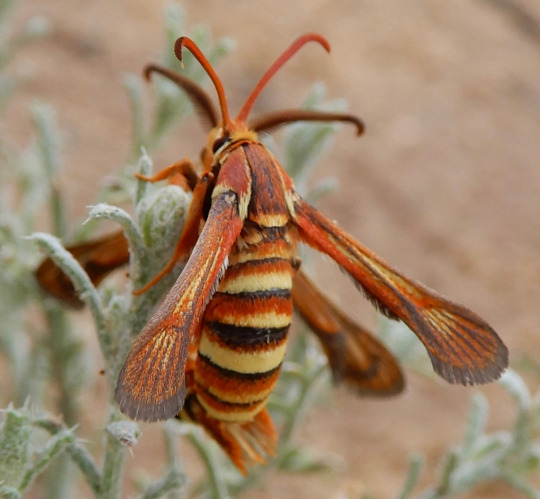


Wasp-mimic clearwing moth, Euhagena emphytiformis, Sesiidae
Found in the United States
Photo 1 by ellen5
#animals#curators on tumblr#insects#bugs#moth#clearwing moth#wasp mimic clearwing moth#mimicry#one nice bug
11K notes
·
View notes
Text

based off of this ☺️ 🐝
#Rora's art#illustration#digital art#doodle#artists on tumblr#Wasp mimic clearwing tiger moth#but as a fairy I guess?#still trying to figure out my art
2 notes
·
View notes
Text
Moths in Disguise: these are all just harmless moths that have developed the ability to mimic wasps, bees, and/or hornets

Top Row (left to right): Eusphecia pimplaeformis and Myrmecopsis polistes; Bottom Row: Pennisetia marginatum
Moths are exceptionally skilled when it comes to mimicry, and there are hundreds of moth species that rely on that tactic as a way to protect themselves from predators. Their disguises are numerous and varied, but hymenopteran mimicry is particularly common, especially among the moths that belong to subfamily Sesiidae and family Arctiinae.

Yellowjacket-Mimicking Moths: Pseudosphex sp. (top and bottom left) and Myrmecopsis polistes (bottom right)
Some of their disguises involve more than just a physical resemblance -- there are some moths that also engage in behavioral and/or acoustic mimicry, meaning that they can imitate the specific sounds and behaviors of their hymenopteran models. In some cases, these moths are so convincing that they can even fool the actual wasps/bees that they are mimicking.
Such a detailed and intricate disguise is unusual even among mimics, and researchers believe that it developed partly as a way to trick the wasps into treating the mimic like one of their own. Wasps tend to prey upon moths (and many other insects), but they are innately non-aggressive toward their own nest-mates, which are identified by sight -- so if the moth can convincingly impersonate its model, then it can avoid being eaten by predatory wasps.
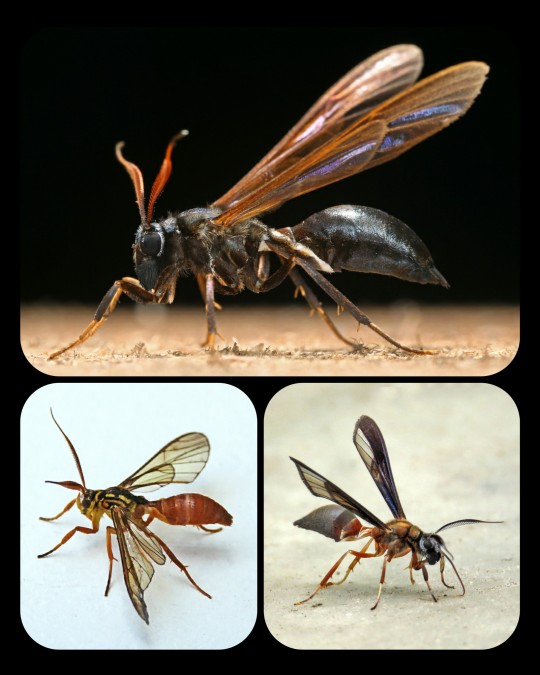
Wasp-Mimicking Moths: Pseudosphex ichneumonea (top), Myrmecopsis sp. (bottom left), and Pseudosphex sp. (bottom right)
There are many moths that can also mimic hornets, bumblebees, and carpenter bees.
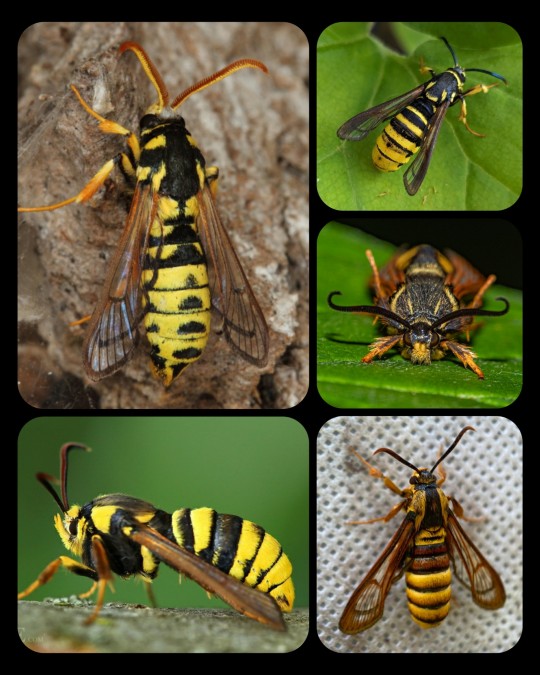
Hornet-Mimicking Moths: Eusphecia pimplaeformis (top left), Sesia apiformis (bottom left), Paranthrene simulans (top right), Pennisetia marginatum (middle right), and Sphecodoptera scribai (bottom left)

Bumblebee-Mimicking Moths: Hemaris tityus (top and bottom left) and Hemaris affinis (bottom right)
Moths are some of the most talented mimics in the natural world, as illustrated by their mastery of hymenopteran mimicry. But it's not just bees, hornets, and wasps -- there are many other forms of mimicry that can be found among moths, and the resemblance is often staggering.
Moths deserve far more credit than they receive, to be honest, because they are so incredibly interesting/diverse.
Sources & More Info:
Journal of Ecology and Evolution: A Hypothesis to Explain the Accuracy of Wasp Resemblances
Frontiers in Zoology: Southeast Asian clearwing moths buzz like their model bees
Royal Society Publishing: Moving like a model: mimicry of hymenopteran flight trajectories by clearwing moths of Southeast Asian rainforests
#lepidoptera#moths#Sesiidae#entomology#insects#animals#cool bugs#mimicry#nature#evolution#Arctiinae#bees#hymenoptera#hymenopteran mimic#wasp#bumblebee#acoustic mimicry#evolutionary arms race#I spend way too much time#reading about moths
103 notes
·
View notes
Text




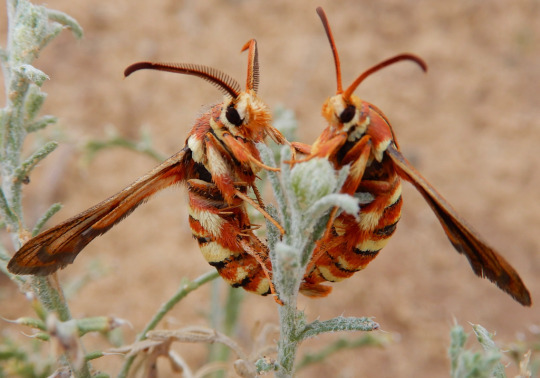




Wasp-mimic clearwing moth
x x x - x x x - x x x
99 notes
·
View notes
Note
ooh do you have a favorite moth species or genre? I quite adore a lot of them, clearwings (sesiidae) are really cool to me, especially because I already love wasps so hymenoptera mimics are really cool to me. bonus point for hummingbird-mimicking hawkmoths that also have clear wings, just arent in sesiidae. Though I also really like rosy maple moths :D

omg I just looked up the clearwings THEY ARE ADORABLE 😭😭😭
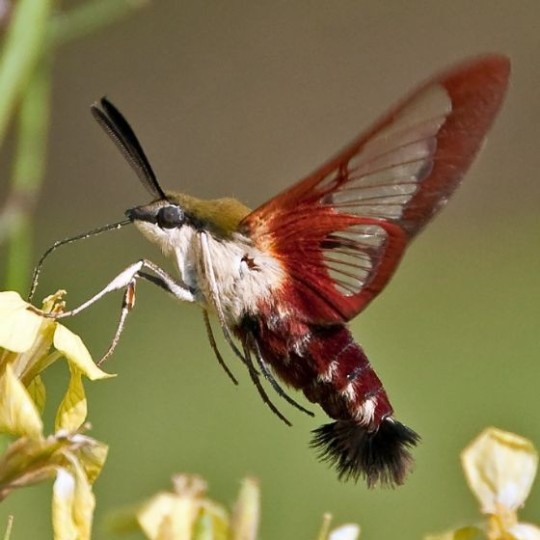
the resemblance!! even the coloration :'0 beautiful
one of my favs are the classic LUNA moths


I always adored the shape of their wings!! So majestic
besides them I also really really like those two
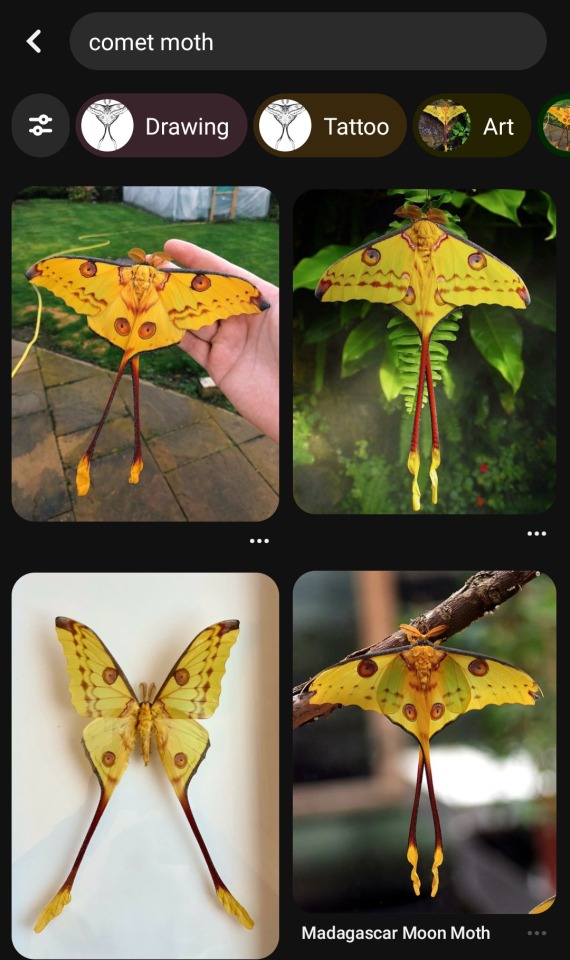

Madagascan moon moth and rosy maple
I just love them all, butterflies and moths I was in a butterfly garden couple months ago and it was a magical experience
12 notes
·
View notes
Text
Moth wings - strategies to avoid predation
Hide and seek (cryptic colouration) and/or hide and seek but I dress up as the thing I'm hiding on (Wasmannian mimicry)


Pictured: a peppered moth and a wave sphinx moth
'Yeah I'm poisonous, look at my scary bright colors' (aposematism) and/or 'Yeah I'm poisonous, I'm similarly coloured to another poisonous moth which you've eaten before so no need to eat me' (Mullerian mimicry)
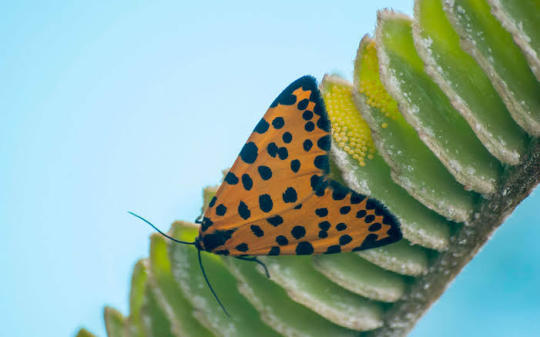

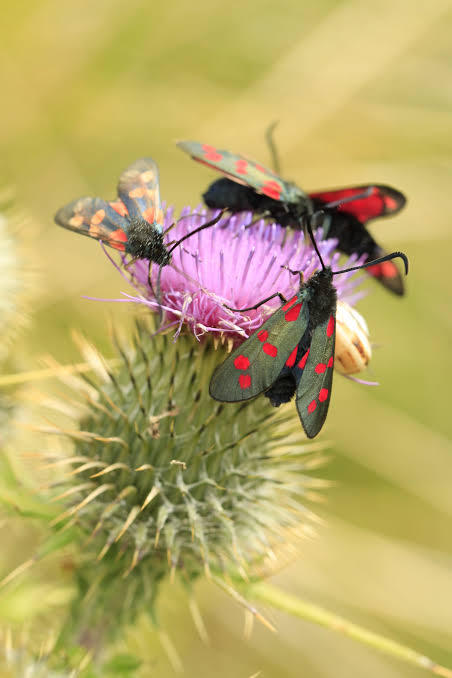
Pictured: a female leopard magpie moth, a garden tiger moth and several six-spot burnet moths
'Duh I'm poisonous!! I look like [insert other poisonous insect or animal], but please don't test your theory by biting me otherwise you'll find out I'm not actually poisonous' (Batesian mimicry)

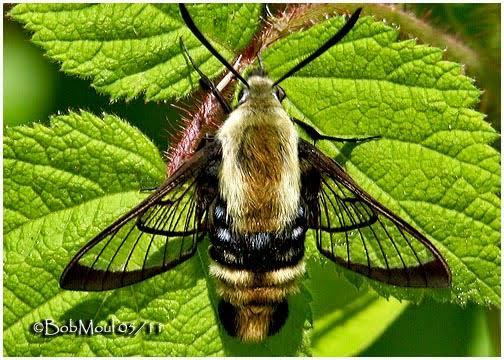

Included in the medley: a wasp mimic (male red oak clearwing), a bumblebee mimic (snowberry clearwing) and a spider mimic (a petrophila species)
Image sources:
Sidenote: I hate formatting posts on mobile eeghhhh
https://le.kloofconservancy.org.za/lockdown-an-opportunity-to-appreciate-your-local-biodiversity/
9 notes
·
View notes
Note
wasp-mimic clearwing moth?
I'm afraid that is not the name of a moth, and I do not know which one you mean. /lh
16 notes
·
View notes
Text
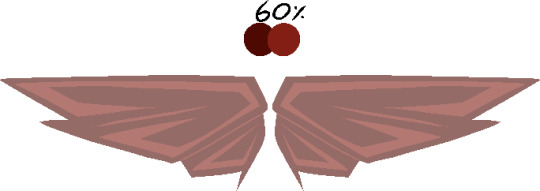
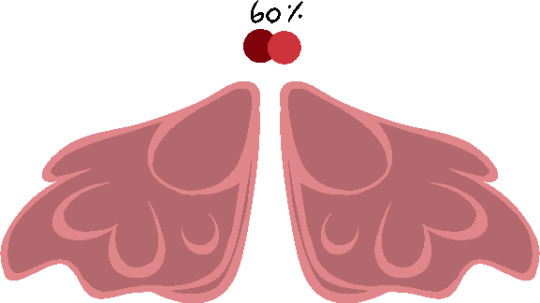

Colari Siccal and Liefie Kuchen's wings
Theyre both based on moths
Colari is a Clearwing Moth (mimics a Wasp to be intimidating)
Liefie is a Domesticated Silk moth
#Colari Siccal#Liefie Kuchen#fantroll#fantrolls#out of control mspfa#homestuck god tier#homestuck godtier#homestuck godtier designs
23 notes
·
View notes
Note
alright here's some moth facts
Atlas moths, despite being the largest moth species in the world, doesn't have a mouth as an adult and survives solely off the energy it stored as a caterpillar.
there's a genus of moths called Sophronia and they're just. the goofiest little guys ever. they're like sticks
there's a specific moth called Heterosphecia tawonoides (common name oriental blue clearwing) that hadn't been seen for nearly 100 years. the first specimen ever collected of it was back in 1887, and was supposedly never seen again until 2013. because of this, very little is known about it, but it has been seen in Malaysia and Indonesia (: it's also known to mimic the look of bees and occasionally wasps!
speaking of mimicry, it's a moth's specialty! Atlas moths' wings mimic the heads on snakes; hummingbird hawkmoths mimic hummingbirds very well; countless moths have eye-like patterns; the list goes on. funky little guys who love playing dressup
certain types of moths are actually able to squeak!! it's only been seen in hawkmoths, however. my favourite squeaking moth is the death's-head hawkmoth (: they're super neat in general
moths pollinate too! not that interesting but idk they have a use in the world other than being part of the food chain
moth symbolism is also really neat. depends on the culture you look at, but moths can generally be viewed as symbols of blind faith, transformation, or change.
MOTH FACTS!!! sharing these with the world after gatekeeping for ages
1 note
·
View note
Photo


#insect#moth#wasp mimic#arizona#photographers on tumblr#textless#amadee ricketts#flower#wildflowers#acacia#pom pom#clearwing moth#black and yellow#macro
166 notes
·
View notes
Text
with summer coming fast i just wanna share a psa on wasps and why they're good too.
- they do serve a purpose in the ecosystem. wasps are vital predators of aphids and blackflies. with no predation, one cabbage aphid could cover our planet in 822 million tonnes of bugs because they're so fertile, as estimated by zoologist mark carwardine. not only do wasps eat for themselves, but they need to provide for their grubs too, so that's even more aphids getting picked off every day. parasitic wasps of the family trichogrammatidae are used in horticulture for biological control of pests. trichogramma galloi is used to control sugarcane borers and encarsia formosa is used to control whitefly, a pest of tomato, cucumber, aubergine and strawberry. on some farms they even replace chemical pesticides.

- they are effective pollinators with some species contributing massively to the maintenance of plant populations. there are over 800 species of fig tree and each one has its own specific fig wasp. without one another, neither the fig nor fig wasp can complete their life-cycle - a clear example of co-evolution that has been successful for over 60 million years. Figs are a keystone species in tropical regions worldwide – their fruit supports the diets of at least 1,274 mammals and birds, meaning that the extinction of fig wasps would therefore be catastrophic in tropical ecosystems. furthermore, at least 100 orchid species rely on european wasps and common wasps for pollination.

- paper wasps and potter wasps make amazing artists. they can construct flawless nests made of wood and create stunning miniature pot nests out of nothing but mud and saliva. in one amazing case, a colony of paper wasps constructed a rainbow-coloured nest using coloured sheets of paper as shown on the right. (menchetti 2016)
- wasps are socially intelligent. not only can paper wasps recognise each other by the colour patterns on their faces, but they can still do so after at least one week apart. (sheehan and tibbetts 2008) european wasps can learn to recognise human faces. despite having no evolutionary reason for doing so, they construct holistic representations of complex images to remember a specific human face. (avarguès-weber et al 2018) sand wasps tend to two or three chambers each day. each chamber is in a different location and each larva is at a different developmental stage. it was found that they learn the configuration of landmarks around each concealed chamber in order to find them. this means that the wasp learns where the chambers are and which action is needed at each. (baerends 1939)
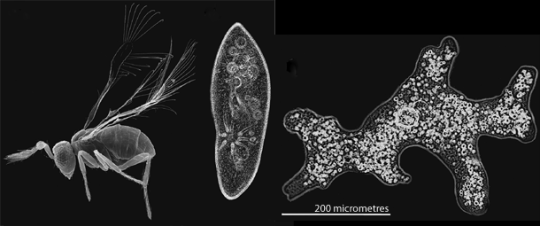
- the world's smallest known insect is a fairy wasp! at only 139-240 micrometres long, dicopomorpha echmepterygis is smaller than some paramecium and amoeba species. the fairy wasp family also contains the smallest flying insect, kikiki huna. adult lifespans are very short, only lasting for a few days. several species are used as biological pest control agents. some species are even aquatic, using their wings as tiny paddles to swim around.

- social wasps are frequent models for batesian mimicry and müllerian mimicry. this means that non-stinging insects use wasps as a base to appear threatening to predators. their presence thus changes how other insects evolve. even bees such as the nomad bee have evolved to mimic wasps. (yellowjacket wasp on the left, clearwing moth on the right.)
13K notes
·
View notes
Text
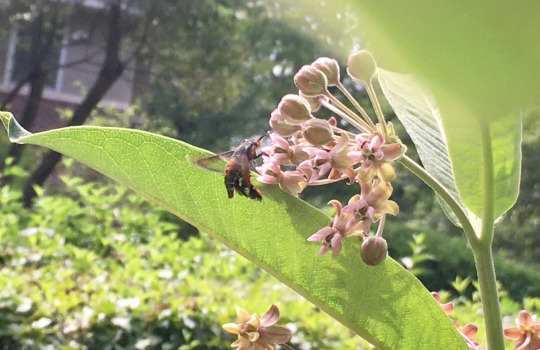
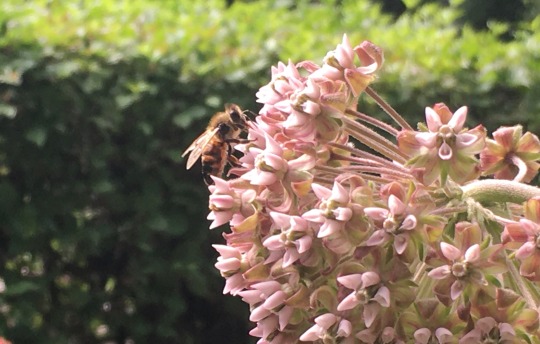
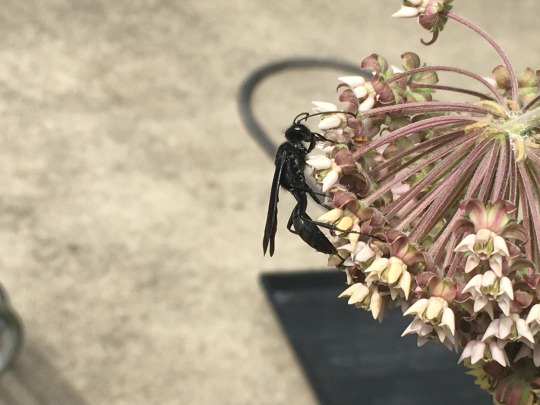





@not-all-cannibals submitted: Friends in my pollinator garden in Chicago. Was hoping for maybe an ID on the first bee (the one with the fuzzy legs) and the wasps?
A whole bunch of very nice friends! The first dude is not a bee, but rather a type of clearwing moth called the squash vine borer that mimics bees or wasps. The all black wasp looks like a great black digger, and the one with the half-orange butt looks like a great golden digger. And the black and yellow one above the monarchs looks like European paper wasp. Thanks for sharing all your garden pals :)
#animals#bugs#insects#submission#moth#squash vine borer#mimicry#wasp#bee#great black digger wasp#great golden digger wasp#european paper wasp#butterfly#monarch#true bugs#hemiptera#large milkweed bug
91 notes
·
View notes
Photo







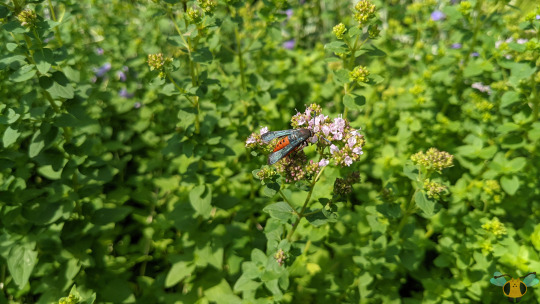


Squash Vine Borer - Melittia cucurbitae
This blog has seen many a post with oregano as a beacon for nectar loving insects. Primarily Bees, Flies and large Digger Wasps are drawn into the aromatic scent and stay for the many small flowers. The Bees of course bring their friends if they can, but the Digger Wasps are more skittish: taking what they can, fighting each other if they get too close. This mostly occurs in the large patch of the herb in the front yard, but the backyard now has its own small patch, drawing in a few individuals that now don’t have to compete as arduously for nectar and space. I’m telling you all this information which I’ve no doubt said time and again to lead to the build up of a new Moth specie I noticed fluttering around the oregano yesterday. It may fly during the day, but it’s most definitely a Moth. There’s a few things that make it stand out (and yet make it go unnoticed) compared to others. I’ll cover the bulk of it in paragraph 2, beginning with the abdomen. Does that shape and patterning seem familiar to you? When seen from a distance with the folded wings, this Moth greatly resembles more Yellowjackety creatures, making it a Wasp-Mimic! This allows it to forage more leisurely while giving predators the slip.
Such a look is common among Moths of the family Sesiidae, or Clearwing Moths. It shouldn’t get too comfortable as Wasps have tools to fight this Moth off, while the Moth is defenseless. Good thing it doesn’t smell like a Wasp. Alongside resembling a Wasp, this Moth has other features that make it distinguished compared to previously featured Moths. For one, as a Clearwing Moth, its wings actually lack scales making parts of them transparent. I can be tough to see when the insect is at rest given how it folds its wings, but you can get a closer look for yourself at Pictures 2, 5, 7 and 10. This feature is a bit ironic actually as the name “Lepidoptera” literally translates to “scale wing”, but as this specie shows, it doesn’t mean the entire wing has to have scales. But just because there aren’t fully scaled wings, doesn’t mean the scales can’t be found elsewhere, such as on the hind legs. This Moth is actually missing one of those hind legs, but the other one is covered in orange scales! You certainly won’t find a Wasp with a hairy leg like that, haha. Put all that together and you have the Squash Vine Borer*! While the adult Moth feeds on nectar using a proboscis, the young Caterpillars tunnel into the stems and vines of gourds after hatching. With squash plants in our backyard, we’ll be keeping a close eye on them now just to be safe.
*Note: The borer is similar to its relative the Southeastern Squash Borer Moth (M. calabaza) in ranges where the two can overlap. To confirm the specimen you’ve found, look at the 2nd abdomen segment. The common Squash Borer has an olive-green color, while the Southeastern Borer has an orange segment. It’s this information that helped me identify this beautiful Moth. I hope this helps you too.
Pictures were taken on July 15, 2021 with a Google Pixel 4.
#jonny's insect catalogue#insect#moth#squash vine borer#lepidoptera#clearwing moth#toronto#july2021#2021#ontario insect#entomology#nature#invertebrates
3 notes
·
View notes
Note
do you have any favourite moths? 😊
hey i’d die for you thank you
my favorite are probably the clearwing moth family! talented imitators that mimic stuff like bees and wasps and even hummingbirds!!
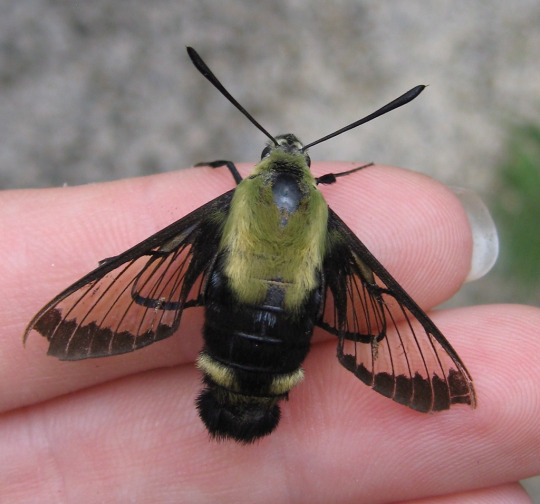
ID: snowberry clearwing moth, aka the bumblebee moth (hemaris diffinis)

ID: hummingbird clearwing moth (hemaris thysbe)
although, i hold a special place in my heart for rosy maple moths and luna moths

ID: rosy maple moth (dryocampa rubicunda): the moth that first got me interested in moths! it reminds me of the rose bush in front of the house i grew up in
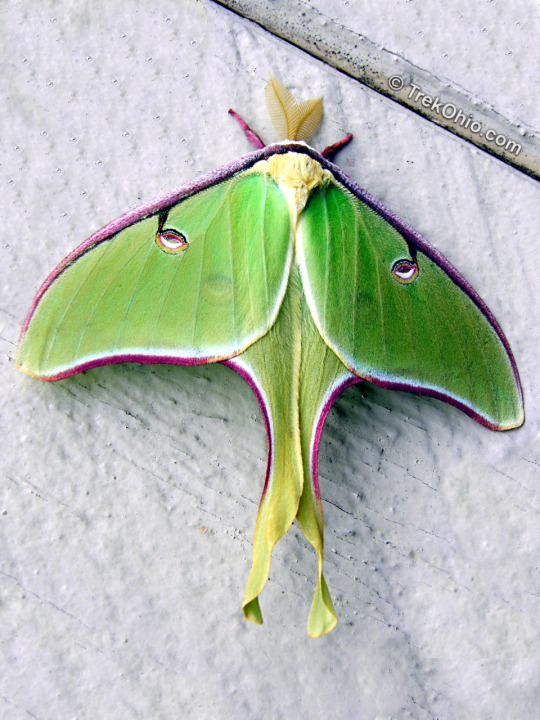
ID: traditional luna moth (actias luna)
there’s actually a lot of luna moths! the name “luna moth” specifically refers to actias luna, but the actias genus contains many more asian-american moon moths! there’s also many similar looking moths outside of the genus also called moon moths!

ID: hybrid moon moth (actias dubernadi x graellsia isabellae)

ID: spanish moon moth (graellsia isabellae)

ID: male sweetheart moonmoth (actias dulcinea)
the family of moths actias belongs to, saturniids, all lack mouth parts in their adult form. they live for about a week on the energy stored from their days as a caterpillar!
of course, i also love hawkmoths.... especially the deaths-head hawkmoths! the deathshead hawkmoths are three moths belonging to the genus acherontia! they sneak into beehives and steal honey!!! they make squeaking noises!!! and mimic the scent of bees!

ID: deaths-head hawkmoth (acherontia atropos) found mostly throughout europe and africa

ID: greater death’s head hawkmoth aka bee robber (acherontia lachesis) found mostly in asia
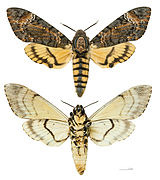
ID: lesser death’s head hawkmoth aka bee robber (acherontia styx) found mostly in asia
i’ve talked for awhile but basically! i love moths :D my head is filled with various clearwing and death’s head hawkmoths.
#moths#its been awhile since i infodumped moth facts and im so happy now!! thank you;;;#servant speaks#Anonymous
72 notes
·
View notes
Photo
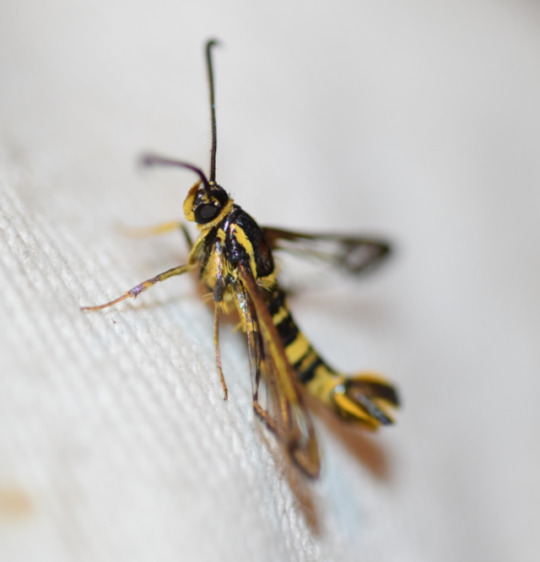



Sycamore Borer - Synanthedon resplendens
Have a couple trees infested with these little things in my yard (way smaller moths than I expected based on the caterpillars) and finally had a payoff with an adult showing up - YAY!
#moth#moths#insect#insects#lepidoptera#leps#lepidopterans#caterpillar#caterpillars#clearwing#borer#wasp#mimic#wasp mimic#Synanthedon#resplendens#sycamore#macro#original photography blog#original photographers on tumblr
1 note
·
View note
Text
I’ve seen wasp mimic moths but I just discovered a species of bee mimic moth and it’s so damn cute


they’re called oriental blue clearwings and they were thought to have been extinct for 130 years with only a single specimen ever being found, but they’re still around! they’re tiny at only two centimeters long, hang out with real bees, and do the zig-zagging flight pattern and buzzing to make their mimicry more convincing.
precious little bee moth friends
[article source]
#moths#insects#clearwing moth#mimicry#lepidoptera#oriental blue clearwing#arthropods#invertebrates#heterosphecia tawanoides#fun fact I found out about this because I was looking for name ideas for my shiny Venomoth#I named her after the lead scientist author of the paper on these guys
112 notes
·
View notes